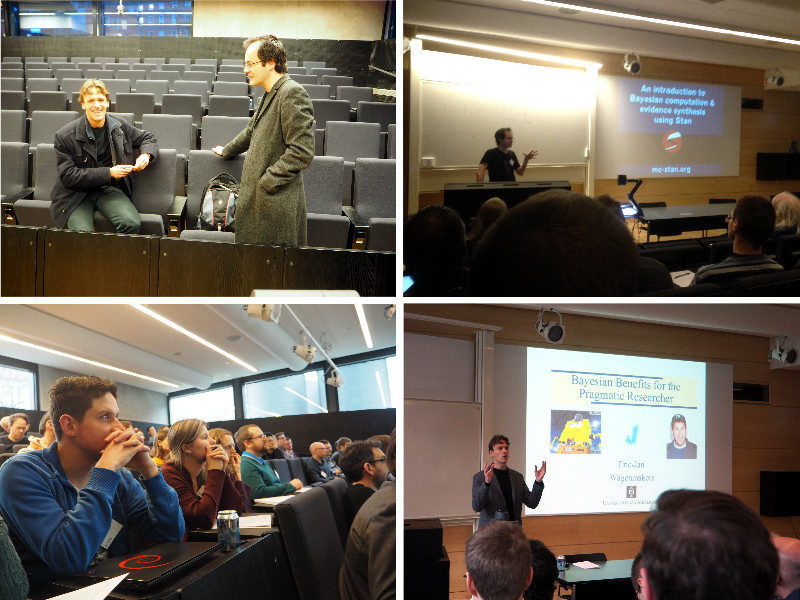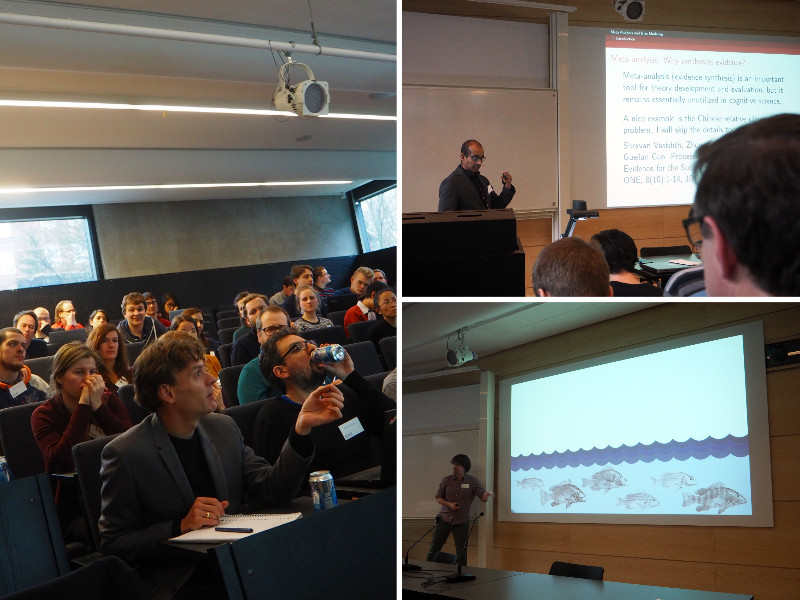For the third year round I and Ullrika Sahlin arranged Bayes@Lund, a mini-conference bringing together researchers interested in or working with Bayesian methods in and around Sweden. This year we were thrilled to have over 70 attendees, both from near and far, perhaps due to our interesting invited speakers Eric-Jan Wagenmakers and Robert Grant, or perhaps due to the promise of fika (a Swedish word referring to a break involving coffee and/or tea with cake and/or cookies and/or pastries, the more and the better). Perhaps it was a combination…
The conference began with an introduction to evidence synthesis using Stan by Robert Grant. It was a talk just to my liking, going from introducing Bayes to discussing Stan syntax in less than 30 min, with just the right amount of detail and carefully thought-out hand-waving. The talk surely convinced many in the audience that Stan is the way to go if you want to do Bayes. For those in the audience not wanting to get their hands and minds dirty writing code, Eric-Jan Wagenmakers presented an excellent alternative during his keynote presentation: JASP. Touted as “a low fat alternative to SPSS”, JASP is a pointy-clicky program that allows one to run basic Bayesian analyses using a very smooth interface. Apart for introducing JASP, Eric-Jan talked about “Bayesian Benefits for the Pragmatic Researcher” showing concrete examples of how Bayesian statistics can be easier to understand and apply than classical statistics.
 The invited speakers at Bayes@Lund with Eric-Jan to the left and Robert to the right.
The invited speakers at Bayes@Lund with Eric-Jan to the left and Robert to the right.
The submitted talks covered a wide range of topics, from why Bayes is so seldom used in epidemiological research (by Jonas Björk) to what evidence really means in a Bayesian context (by Ullrika Sahlin). I also presented a “talkified” version of my blog post on the Bayesian bootstrap with the self explanatory title The Bootstrap is a Bayesian procedure, but that doesn’t mean it’s any good (a screencast is in the works).
I was very impressed by the work presented by Shravan Vasishth. A commonly stated benefit of using Bayesian methods is that it is possible to add expert information into the analysis, but this is easier said than done and I think it is common to just rely on default priors. But when Shravan does meta-analysis he doesn’t rely on defaults, instead he gets his hands dirty and carefully crafts priors reflecting the different biases that could be part of the studies to be analyzed. Highly subjective, but arguably also a better approach than just pretending all studies are the same. You can read more about this work in Shravan’s Master thesis.
 The submitted talks covered a wide range of topics. Here Shravan Vasishth is at the top and I’m at the bottom.
The submitted talks covered a wide range of topics. Here Shravan Vasishth is at the top and I’m at the bottom.
The conference ended with Henrike Häbel comparing frequentist and a Bayesian model of the growth of Swedish Scots pines, an interesting topic to me as my family actually have a small patch of pine forest in the north of Sweden. The conclusion was that, while both the frequentist and the Bayesian model gave similar results, the Bayesian model was easier to use and to understand. A conclusion that completely resonates with my own experience.
The full program to Bayes@Lund 2016, including abstracts, is available here. For more info and pictures from the conference see the Bayes@Lund 2016 web page.
